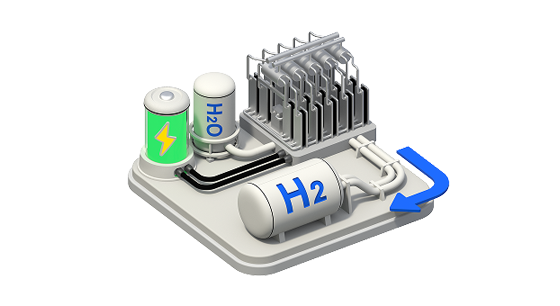
Budget and 2050 Target Outcomes
- Budget
Up to72.15B¥
- CO2Reduction Effect
Approx.1,520Mt/yr
- Economic Effect
Approx.4.4T¥
Related Contents
There are no related contents.
Project Summary
Budget
Up to72.15billion yen
CO2 Reduction Effect (World)
In 2030: Approximately40million tons/year
In 2050: Approximately1,520million tons/year
Economic Effect (World)
In 2030: Approximately0.4trillion yen
In 2050: Approximately4.4trillion yen
Research and Development Targets
Electrolyzer capital cost
In 2030: Alkaline 52,000 yen/kW・PEM 65,000 yen/kW
Assumptions regarding estimates of CO2 reduction effect and economic effect
- Hydrogen produced by electrolyzers is expected to mainly be used for heating.
- Hydrogen is expected to replace imported natural gas, which emits less CO2 than other fossil fuels such as oil and coal, with equivalent heat values.
- Estimates of hydrogen production have been calculated on the basis of the assumption that electrolyzers with the following capacities will operate at the rate used for Germany’s national hydrogen strategy:
In 2030: 70 GW (total value from major countries and regions which have established targets for the installation of electrolyzers).
In 2050: On average, electrolyzers are expected to be installed at the rate of 88 GW/year. - Estimates of economic impacts have been calculated using the following costs for electrolyzer installation:
In 2030: 58,500 yen/kW
In 2050: 50,000 yen/kW

